Training for Antarctica: Polar-Style Expeditions on Lake Winnipeg
There’s no business like snow business.
Nearly every year in January or February, I make a pilgrimage to Lake Winnipeg in Manitoba, Canada, where I indoctrinate a bevy of aspiring Shackleton wannabes on the finer points of polar travel and winter survival.
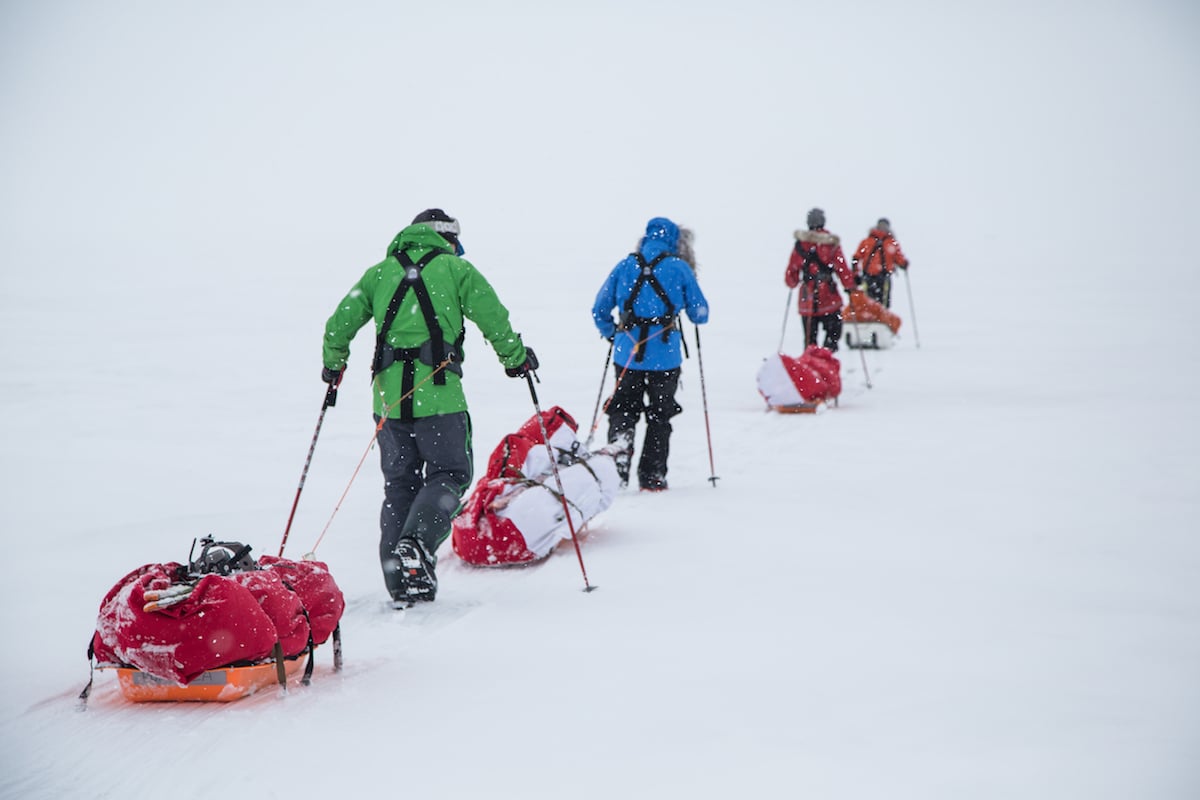
For those of you who don’t know, I teach a variety of hands-on intensives focused on winter and expedition-style travel. My Level One course is an immersive baptism-by-fire dive into the world of polar travel. We base out of a remote cabin on the eastern shore of Lake Winnipeg where we eat, sleep and breathe polar-style travel—everything from ski techniques to sleeping at minus 30 to expedition menu planning and more. Unlike mountaineering, in polar travel we set up and take down camp EVERY DAY. Therefore, I focus a substantial amount of time teaching the skills to help us set up camp efficiently and safely. There is enough subtle nuance to learn, awareness to build, and skills to hone to make for a steep learning curve. It can be overwhelming –which is why we start slow. After a two and a half day primer, we hit the ice for a five day expedition on the lake.
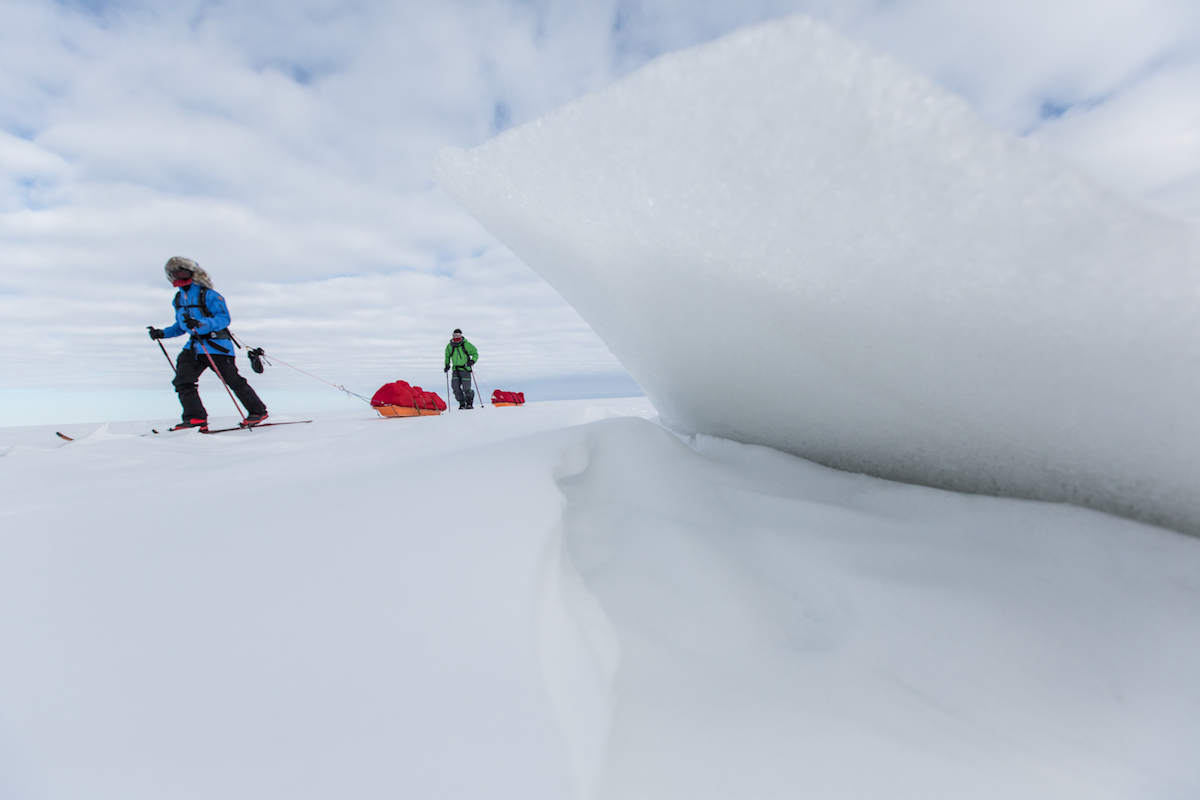
The reason I like coming to this particular location—Lake Winnipeg—versus Baffin Island or Resolute for this course is the fact that it is the best place in North America where you find snow surface conditions most similar to Antarctica. High winds sculpt the snow into sastrugi shapes similar to what I’ve seen in Antarctica on South Pole expeditions. With its location north of the 50th parallel, the region also offers arctic-like temperatures. In fact, the coldest temperature I’ve ever experienced in my life was on Lake Winnipeg… roughly -65 F with the wind chill. It’s really the best of both (polar) worlds. With a major airport nearby, it’s cost effective to get to as well.
Of course, there’s also the fact that Lake Winnipeg is huge. It’s the 10th largest fresh water lake in the world! In just a couple of days of ski travel, we can reach a point where the shore line falls below the horizon and we’re surrounded only by snow, ice and sky.
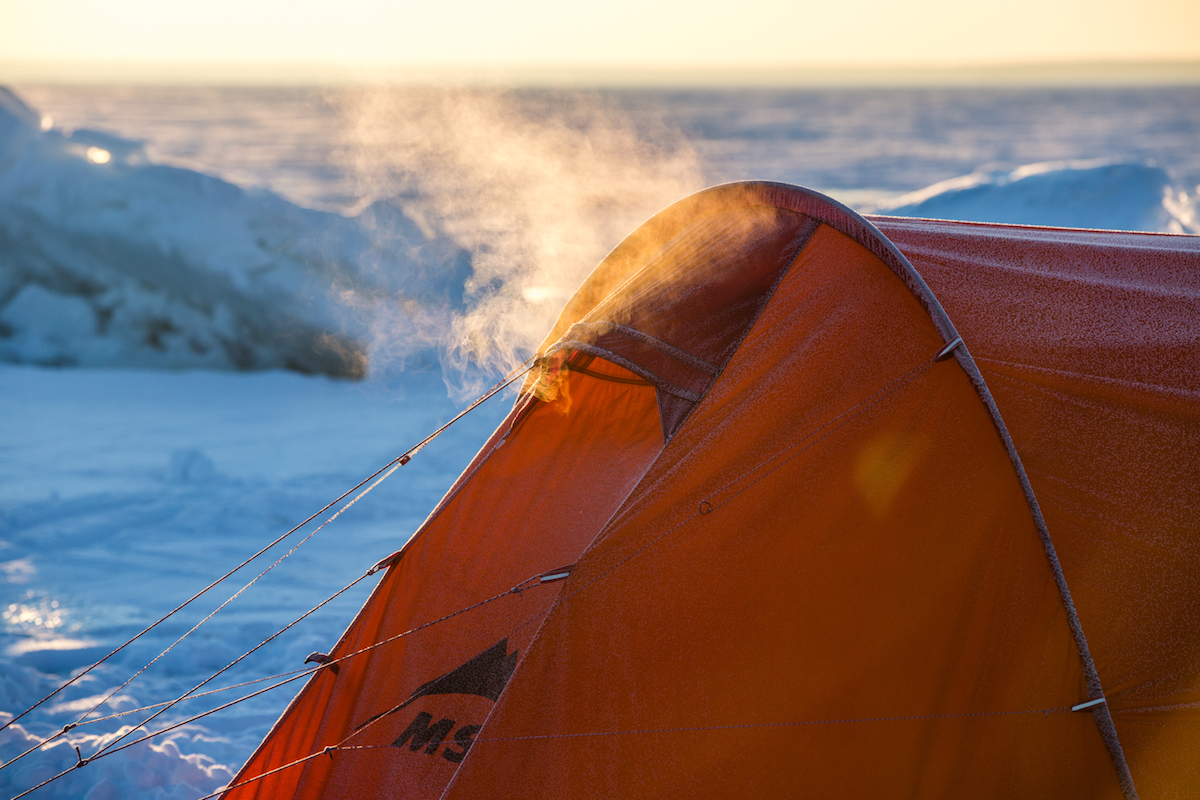
Leading and teaching this course, while fun and engaging, can also be quite stressful at times. Out here, one small mistake can have huge consequences and as a leader / guide I have to be hyper vigilant. I know from firsthand experience how quickly we can go from status quo to a survival situation. Knowing all the possible outcomes of being on the ice is a heavy burden to bear, but it is also exhilarating. Eventually, my students begin to understand how to live, survive and thrive in these extreme conditions.
Our equipment is equally important to our safety. Since we pull everything that we need to live and survive in sleds, I am always concerned about the weight of my gear. However, durability and functionality of gear are even more important—especially when you consider the toll that extreme cold can take. At 30 below a tent pole can snap like a dry twig and nylon can tear like a sheet of paper.
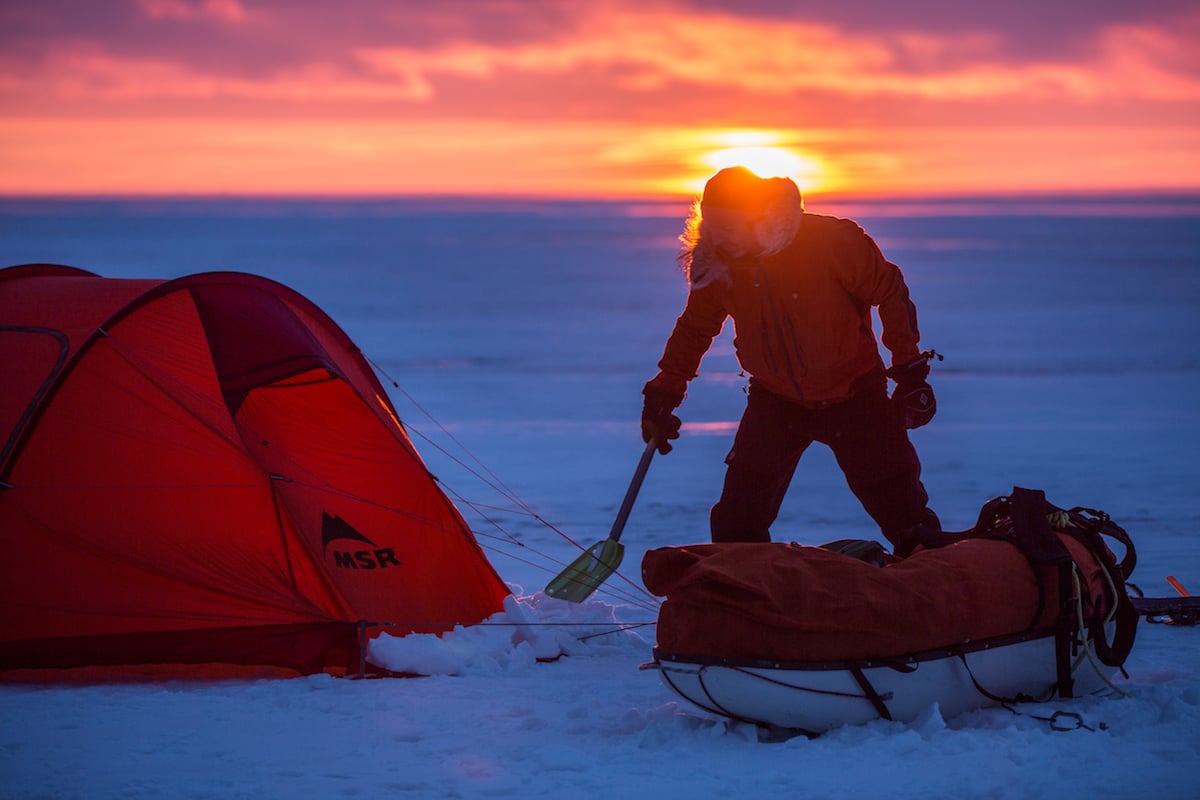
Luckily there are a variety of MSR products that fit the bill perfectly. In fact, MSR products make up a substantial amount of our overall kit. From the always reliable XGK – EX stove to the Responder shovel, we can’t take one of these items out of the equation and expect to be able to complete our journey. MSR poles, fuel bottles, pots, snow stakes, utensils… the list goes on. Of course, MSR is also known for unparalleled tent design and after a few years of begging, I was able to get a couple of custom tunnel tents as well. (Thanks team.)
It’s always hard to say goodbye at the end of a week like this and many of my clients have become friends with whom I regularly correspond. I like being able to share my experiences with others and help people become more comfortable in the cold. The skills I teach translate to a variety of adventures, big and small, and my real job is to simply provide a base from which each person can grow and expand.
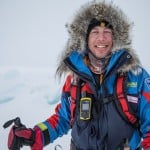
Polar adventurer, expedition guide, dog musher and educator, Eric Larsen has spent the past 15 years of his life traveling in some of the most remote and wild places left on earth. In 2006, Eric and Lonnie Dupre completed the first ever summer expedition to the North Pole. In November 2009, Eric returned to Antarctica for the first leg of his world record Save the Poles expedition. This time he completed a 750-mile ski traverse to the geographic South arriving on January 2, 2010. Two short months later he was dropped off at northern Ellesmere Island for a winter-style North Pole Journey. The international team reached the North Pole 51 days later on Earth Day – April 22, 2010. He completed the Save the Poles expedition by reaching the summit of Mt. Everest on October 15th, 2010 becoming the first person in history to reach the world’s three ‘poles’ within a 365-day period.
